|
Books Should Be Free Loyal Books Free Public Domain Audiobooks & eBook Downloads |
|
|
Books Should Be Free Loyal Books Free Public Domain Audiobooks & eBook Downloads |
|
Science |
|---|
Book type:
Sort by:
View by:
|
By: An Anti-Slavery Convention of American Women (1837-1837) | |
|---|---|
 Address to Free Colored Americans
Address to Free Colored Americans
The first Anti-Slavery Convention of American Women met in New York City in May, 1837. Members at the Convention came from all walks of life and included such prominent women as Mary Parker, Lucretia Mott, the Grimke sisters, and Lydia Maria Child. One outcome of this important event was a statement of the organization’s role in the abolitionist movement as expressed in AN ADDRESS TO FREE COLORED AMERICANS, which begins: “The sympathy we feel for our oppressed fellow-citizens who are enslaved... | |
By: Anna Botsford Comstock (1854-1930) | |
|---|---|
 Handbook of Nature-Study, Part 1
Handbook of Nature-Study, Part 1
Handbook of Nature-Study was written by Anna Botsford Comstock during an era of growing societal concern for man's treatment of the natural world. Out of this concern grew the nature study movement which sought to teach science to school children (and others) through direct observation of nature by the students themselves instead of by the study of nature books. The book is written as a guide for teachers instructing their classes in nature study and includes a wealth of information about plants, animals, the earth, and the sky along with suggestions for guiding students in their observations... | |
By: Anonymous | |
|---|---|
 Young Girl's Diary
Young Girl's Diary
The diary of an upper middle class Austrian girl, this book describes her life between the ages of eleven and fourteen. It's a coming of age story full of angst, boys, and questions. | |
By: Arabella B. Buckley (1840-1929) | |
|---|---|
 Through Magic Glasses and Other Lectures
Through Magic Glasses and Other Lectures
"The present volume is chiefly intended for those of my young friends who have read, and been interested in, The Fairyland of Science. It travels over a wide field, pointing out a few of the marvellous facts which can be studied and enjoyed by the help of optical instruments. It will be seen at a glance that any one of the subjects dealt with might be made the study of a lifetime, and that the little information given in each lecture is only enough to make the reader long for more.In these days,... | |
By: Aristotle (384 BC - 322 BC) | |
|---|---|
 Physics
Physics
Physics (Greek: Φυσικὴ ἀκρόασις; Latin: Physica, or Physicae Auscultationes) discusses concepts including: substance, accident, the infinite, causation, motion, time and the Prime Mover. | |
By: Christiaan Huygens (1629-1695) | |
|---|---|
 Treatise on Light
Treatise on Light
Treatise on Light was published in 1690 and is probably the largest scientific volume on light published before Newton's Opticks. The book explains how light travels (i.e., that it has a certain velocity), and what happens when it hits a surface (refraction and reflection). A large portion of the book is devoted to the double refraction occurring in Iceland chrystal, and all drawn conclusions are proved geometrically. Christiaan Huygens (1629 - 1695) was a prominent physicist and astronomer. His main discoveries are the centrifugal force, collision laws for bodies and the argument that light consists of waves... | |
By: Hallam Hawksworth (1863-?) | |
|---|---|
 Adventures of a Grain of Dust
Adventures of a Grain of Dust
This charming book for children is full of interesting facts about all sorts of plants, insects, birds and animals and how they all help to enrich the soil for farmers - each in its own special way. Join our narrator, The Grain of Dust on a fascinating journey around the planet to meet them. "I don't want you to think that I'm boasting, but I do believe I'm one of the greatest travellers that ever was; and if anybody, living or dead, has ever gone through with more than I have I'd like to hear about it... | |
By: James Frazer (1854-1941) | |
|---|---|
 Golden Bough: The Magic Art and the Evolution of Kings, Volume 1
Golden Bough: The Magic Art and the Evolution of Kings, Volume 1
The first volume in Frazer's seminal 12 volume set on anthropology and traditional systems of belief. Topics covered include extensive discussion on the belief in sympathetic and contagious magic, magical influence on the environment, magicians and kings, magicians as priests, the origin of incarnate living gods, and a lengthy essay on the origin on the king of the wood at the lake of Nemi. | |
 Golden Bough. A Study in Magic and Religion. Part 2. Taboo and the Perils of the Soul
Golden Bough. A Study in Magic and Religion. Part 2. Taboo and the Perils of the Soul
The third volume of The Golden Bough. The term Taboo is one of the very few words which the English language has borrowed from the speech of savages. This volume examines the underlying moral code of many societies, both primitive and medieval, and with modern analogies. The reader is encouraged to contemplate the contradictions, inconsistencies, and absurdities, not merely between different people of different countries and ages, but also between similar people within the same countries. Frazer presents extensive evidence that the laws of morality slowly, but subtly, are in an ever changing state. - Summary by Leon Harvey | |
 Golden Bough: The Magic Art and the Evolution of Kings, Volume 2
Golden Bough: The Magic Art and the Evolution of Kings, Volume 2
The second volume in Frazer's seminal 12 volume set on anthropology and traditional systems of belief. The superstition and magical purpose of kings is further discussed alongside the worship of trees, vegetation, fire, and the sacred marriages, and the mystical bond between people and trees. - Summary by Leon Harvey | |
 Golden Bough. A Study in Magic and Religion. Part 3. The Dying God
Golden Bough. A Study in Magic and Religion. Part 3. The Dying God
The fourth volume in Frazer's seminal 12 volume set on anthropology and traditional systems of belief. With this third part of The Golden Bough we take up the question, why had the King of the Wood at Nemi regularly to perish by the hand of his successor? Topics investigated include the practice and intention of human sacrifice, the mortality of gods, the regular killing of divine kings and spirits, and the superstitions surrounding the succession of the soul. - Summary by Leon Harvey | |
By: Margaret Warner Morley (1858-1923) | |
|---|---|
 Seed-Babies
Seed-Babies
Seed Babies piques the child's interest about how seeds grow. It provides interesting information about seeds in a conversational style between two brothers and the various seeds they encounter. These seeds offer grammatical advice, chastises poor reasoning, provide enlightening information, and will often encourage the boys to go and discover answers to their questions themselves. In turn, the author lets the reader know that she too hopes that they will plant some seeds and make discoveries of their own... | |
 Bee People
Bee People
"The Honey-bees are buzzy-fuzzy little pepper pots" Thus this wonderful nature writer begins to tell us about bees, their habits, their way of living and their many contributions to the world and to ourselves. The author writes for all ages and everyone can listen to and enjoy this book. - Summary by Phil Chenevert | |
 Little Wanderers
Little Wanderers
This book discusses a great variety of plants and their seeds in a simple, yet interesting way that children will enjoy. As the books says, "Plants are great travelers; they often wander far and wide. Sometimes they even cross the ocean and take up their abode in a new land.” The importance of why seeds “travel” and the various means by which they move are investigated. | |
By: Mary Antin (1881-1949) | |
|---|---|
 They Who Knock at Our Gates
They Who Knock at Our Gates
In 1914, over one million immigrants arrived in the United States, following in the footsteps of approximately ten million others who had arrived in the preceding decade. Faced with so many newcomers, many of them from backgrounds new to the American mix, voices in government and in the press had begun arguing in favor of more severely restrictionist immigration policies. In They Who Knock at Our Gates, Mary Antin broke down the discussion into three basic questions. First, the ethical question --... | |
By: National Comm. on the BP Deepwater Horizon Oil Spill | |
|---|---|
 Final Report from the National Commission on the BP Deepwater Horizon Oil Spill and Offshore Drilling
Final Report from the National Commission on the BP Deepwater Horizon Oil Spill and Offshore Drilling
On April 20, 2010, the Macondo well blew out, costing the lives of 11 men, and beginning a catastrophe that sank the Deepwater Horizon drilling rig and spilled over 4 million barrels of crude oil into the Gulf of Mexico. The spill disrupted an entire region's economy, damaged fisheries and critical habitats, and brought vividly to light the risks of deepwater drilling for oil and gas - the latest frontier in the national energy supply. Soon after, President Barack Obama appointed a seven-member Commission to investigate the disaster, analyze its causes and effects, and recommend the actions necessary to minimize such risks in the future... | |
By: Nellie Bly (1864-1922) | |
|---|---|
 Six Months In Mexico
Six Months In Mexico
This is an account of Nellie Bly's travels through Mexico in 1885. The book was originally a series of individual articles that she submitted to the Pittsburgh Dispatch newspaper for publication. In them she described the conditions of the people and the political system she found in Mexico. Her narratives focused mostly on the impoverished and disadvantaged in a country whose government was extremely corrupt. Bly was perhaps what we now term a feminist, striving for the empowerment and independence of women... | |
By: Orison Swett Marden (1850-1924) | |
|---|---|
 How to Succeed
How to Succeed
In this volume, Orison Swett Marden explains the road to success in simple terms for the benefit of anyone, who wishes to follow in his footsteps. Over 100 years after publication, most of these lessons are still valid today. | |
By: Philip Francis Nowlan (1888-1940) | |
|---|---|
 Airlords of Han
Airlords of Han
Airlords of Han is the 2nd Buck Rogers story, the sequel to Armageddon 2419 A.D.. Anthony Rogers takes the fight to free 25th Century America to the Han overlords. From the March, 1929 issue of Amazing Stories. | |
By: Plato (Πλάτων) (c. 428 BC - c. 347 BC) | |
|---|---|
 Republic (version 2)
Republic (version 2)
The Republic is a Socratic dialogue written by Plato around 380 BC concerning the definition of justice and the order and character of the just city-state and the just man. It is Plato's best-known work and has proven to be one of the most intellectually and historically influential works of philosophy and political theory. In it, Socrates along with various Athenians and foreigners discuss the meaning of justice and examine whether or not the just man is happier than the unjust man by considering a series of different cities coming into existence "in speech", culminating in a city (Kallipolis) ruled by philosopher-kings; and by examining the nature of existing regimes... | |
 Gorgias
Gorgias
This dialogue brings Socrates face to face with the famous sophist Gorgias and his followers. It is a work likely completed around the time of "Republic" and illuminates many of the spiritual ideas of Plato. The spirituality, as Jowett points out in his wonderful introduction, has many ideas akin to Christianity, but is more generous as it reserves damnation only for the tyrants of the world. Some of the truths of Socrates, as presented by Plato, shine forth in this wonderful work on sophistry and other forms of persuasion or cookery. | |
By: Roald Amundsen (1872-1928) | |
|---|---|
 North West Passage -The Gjöa Expedition 1903-1907 (Volume II)
North West Passage -The Gjöa Expedition 1903-1907 (Volume II)
Volume II of Roald Amundsen's The Northwest Passage. Roald Amundsen and six hearty seafarers in the tiny sloop Gjöa are the first to make the complete passage across the top of the North American continent from the Atlantic to the Pacific. With a Supplement by First Lieutenant Godfred Hansen, Vice Commander of the expedition. - Summary by Steven Seitel | |
 North West Passage -The Gjöa Expedition 1903-1907 (Volume I)
North West Passage -The Gjöa Expedition 1903-1907 (Volume I)
Roald Amundsen and six hearty seafarers tackle the North West Passage in search of the elusive wandering magnetic North Pole. | |
By: Sarath Kumar Ghosh (1883-?) | |
|---|---|
 Wonders of the Jungle
Wonders of the Jungle
How do elephants drink? What is the Law of the Jungle at the water hole? How does an elephant baby learn to feed and learn to swim? How do they walk under water? In what order do buffaloes drink? How do buffaloes fight the tiger? These and other wild inhabitants of the Indian jungle such as pigs, wild dogs, deer, camels, bears and birds are discussed in lively stories to entertain but mainly educate children of school age. "One of the great thinkers of the world has said that all the sciences are embodied in natural history... | |
By: United States House of Representatives | |
|---|---|
 Failure of Initiative: Final Report of the Select Bipartisan Committee to Investigate the Preparation for and Response to Hurricane Katrina
Failure of Initiative: Final Report of the Select Bipartisan Committee to Investigate the Preparation for and Response to Hurricane Katrina
In September 2005, the House of Representatives created the Select Bipartisan Committee to Investigate the Preparation for and Response to Hurricane Katrina. The Committee was charged with conducting "a full and complete investigation and study and to report its findings to the House not later than February 15, 2006, regarding-- (1) the development, coordination, and execution by local, State, and Federal authorities of emergency response plans and other activities in preparation for Hurricane Katrina; and (2) the local, State, and Federal government response to Hurricane Katrina... | |
By: Various | |
|---|---|
 National Geographic Magazine Vol. 01 No. 3
National Geographic Magazine Vol. 01 No. 3
National Geographic Magazine Volume 1 Number 3 published in 1889. Topics of articles are: The Rivers and Valleys of Pennsylvania Topographic Models International Literary Contest | |
 Selection of 19th Century Scientific Verse
Selection of 19th Century Scientific Verse
In the 18th and early 19th centuries, it was common for discoveries in branches of science such as botany, astronomy and medicine to be described in book-length treatises in verse. By the end of the 19th century this mode of popularising science was falling from favour as the studies of science and the humanities diverged and study became more specialised.This small selection of somewhat lighter-hearted verse written by distinguished scientists and mathematicians of the day includes poems by James Clerk Maxwell, William J. Macquorn Rankine and James Joseph Sylvester. | |
 National Geographic Magazine Vol. 01 No. 4
National Geographic Magazine Vol. 01 No. 4
National Geographic Magazine Volume 1 Number 4 published in 1889. Topics of articles are: Irrigation in California Round about Asheville A Trip to Panama and Darien Across Nicaragua with Transit and Machéte | |
By: A. Mouritz (1861-1943) | |
|---|---|
 “The Flu”: A Brief History of Influenza in U. S. America, Europe, Hawaii
“The Flu”: A Brief History of Influenza in U. S. America, Europe, Hawaii
PREFACE This Booklet has been written and compiled for the use of any student or layman who seeks concise and clear information on the history of Influenza. Brief and salient facts are set forth relating to “Flu” epidemics and pandemics: other collateral features have also been discussed, connected with or bearing upon this subject. Honolulu, Hawaii, U. S. A., 1921. - A. Mouritz Notes: Much of the material in "The Flu" is still relevant today, like pandemic terminology, thoughts about causes and micro-organisms, the flu's relationship with pneumonia, the impact on society, and approaches to treatments "The Flu" is included in the Surgeon General's Library at the U... | |
By: A. T. Anderson (?-?) | |
|---|---|
 How to Do Chemical Tricks
How to Do Chemical Tricks
While a bit outdated in many of the more complex descriptions of several of the phenomena described, this book is nonetheless still fun and relevant for a person interested in basic chemistry or physics tricks, and the devices built in the book can be easily replicated with more modern materials. The book is split up into many little experiments, tricks, with an explanation on how it works, what's happening, and how to reproduce the effects at home. | |
By: Abraham Lincoln (1809-1865) | |
|---|---|
 Emancipation Proclamation
Emancipation Proclamation
After having written and released an initial draft of this proclamation in September of 1862, minor changes were made and Lincoln signed it on January 1st, 1863. It declared free the slaves in 10 states not then under Union control, with exemptions specified for areas already under Union control in two states. Lincoln spent the next 100 days preparing the army and the nation for emancipation, while Democrats rallied their voters in the 1862 off-year elections by warning of the threat freed slaves posed to northern whites... | |
By: Abraham Merritt | |
|---|---|
 The Metal Monster
The Metal Monster
The Metal Monster is an Abraham Merritt fantasy novel.Dr. Goodwin is on a botanical expedition in the Himalayas. There hemeets Dick Drake, the son of one of his old science acquaintances. They are witnesses of a strange aurora-like effect, but seemingly a deliberate one. As they go out to investigate, they meet Goodwin’s old friends Martin and Ruth Ventnor, brother and sister scientists. The two are besieged by Persians as Darius III led when Alexander of Macedon conquered them more than two thousand years ago.(Wikipedia) | |
 The Moon Pool
The Moon Pool
Dr. David Throckmartin’s scientific expedition to the South Sea Islands discovers among ancient ruins a portal into Muria, an unknown underground world. After the disappearance of Throckmartin, his wife and two companions, his old friend Dr. Walter Goodwin enters Muria with a rescue party, only to confront an fantastic world filled with incredible beings, astounding scientific advances, and the worship of the most evil of all creatures, The Dweller. (Introduction by Mark Nelson) | |
By: Advisory Committee on Human Radiation Experiments | |
|---|---|
 Final Report of the Advisory Committee on Human Radiation Experiments
Final Report of the Advisory Committee on Human Radiation Experiments
Researchers in the United States have performed thousands of human radiation experiments to determine the effects of atomic radiation and radioactive contamination on the human body. Most of these tests were performed, funded, or supervised by the United States military, Atomic Energy Commission, or various other U.S. federal government agencies. The experiments included a wide array of studies, involving things like feeding radioactive food to mentally disabled children, deliberately releasing radioactive chemicals over U... | |
By: Agnes Arber (1879-1960) | |
|---|---|
 Herbals, Their Origin and Evolution: A Chapter in the History of Botany
Herbals, Their Origin and Evolution: A Chapter in the History of Botany
Eminent British botanist Agnes Arber provides an authoritative history of printed Herbals -- books widely used in early modern Europe to catalogue the uses of different kinds of plants. While Herbals often reflected pre-scientific and magical beliefs about the properties of plants, Arber's work reveals that they were also critical to the early development of botany and medicine as empirical sciences. A classic in the history of science. - Summary by Josh Leach | |
By: Agnes Giberne (1845-1939) | |
|---|---|
 Ocean of Air - Meteorology for Beginners
Ocean of Air - Meteorology for Beginners
This is an immensely readable book explaining anything to do with air - the atmosphere, wind and clouds, and life. This 1896 explanation has since been overtaken by more specific scientific discoveries, but the general concepts certainly still hold true until today. Any beginner interested in meteorology will find this book a great place to start. - Summary by Carolin | |
By: Alan Edward Nourse (1928-1992) | |
|---|---|
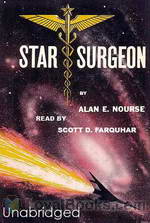 Star Surgeon
Star Surgeon
A thrilling intergalactic adventure, Star Surgeon follows the journey of Dal Timgar as he strives to achieve his lifelong goal of becoming a physician. Published in 1959, the novel explores themes of discrimination, prejudice, and racial oppression, while also presenting key elements of science fiction including interplanetary travel, intergalactic medicine, aliens, and advanced technology. The thrilling tale begins with the introduction of Dal Timgar, a young alien from Garv, who has aspired to become a doctor for as long as he can remember... | |
 Five Stories by Alan Nourse
Five Stories by Alan Nourse
These Five Stories were written by Alan Edward Nourse, an American science fiction (SF) author and physician. He wrote both juvenile and adult science fiction, as well as nonfiction works about medicine and science. His SF works generally focused on medicine and/or psionics. Psionics refers to the practice, study, or psychic ability of using the mind to induce paranormal phenomena. Examples of this include telepathy, telekinesis, and other workings of the outside world through the psyche. | |
By: Albert Einstein (1879-1955) | |
|---|---|
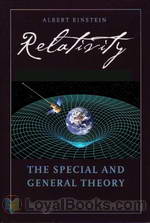 Relativity: The Special and General Theory
Relativity: The Special and General Theory
Einstein wrote this book for people who are interested in understanding the Theory of Relativity but aren't experts in scientific and mathematical principles. I'm sure many people have heard about Einstein's Theory of Relativity, but most of them don't really know what it is all about. This book gives them a chance to know more about this very famous theory without the need to take a Physics course first. This book is divided into three parts. The first part explains what special relativity is all about... | |
 Sidelights on Relativity
Sidelights on Relativity
Sidelights on Relativity contains ETHER AND THE THEORY OF RELATIVITY, an address delivered on May 5th, 1920, in the University of Leyden; and GEOMETRY AND EXPERIENCE, an expanded form of an address to the Prussian Academy of Sciences in Berlin on January 27th, 1921. (Intro from Project Gutenberg) | |
By: Alexandre Dumas (1802-1870) | |
|---|---|
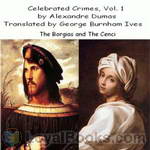 Celebrated Crimes
Celebrated Crimes
Dumas's 'Celebrated Crimes' was not written for children. The novelist has spared no language -- has minced no words -- to describe the violent scenes of a violent time.In some instances facts appear distorted out of their true perspective, and in others the author makes unwarranted charges. The careful, mature reader, for whom the books are intended, will recognize, and allow for, this fact.The first volume comprises the annals of the Borgias and the Cenci. The name of the noted and notorious Florentine family has become a synonym for intrigue and violence, and yet the Borgias have not been without stanch defenders in history... | |
By: Alfred Arthur Reade | |
|---|---|
 Tea and Tea Drinking
Tea and Tea Drinking
Not a complete history of tea, but a pleasant diversion concerning tea, the pleasures found in its drinking, effects, benefits, cautions, etc. Sprinkled with poetry and excerpts from historical personages and the occasional sermon. - Summary by KevinS | |
By: Alfred North Whitehead (1861-1947) | |
|---|---|
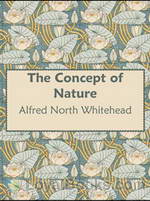 The Concept of Nature
The Concept of Nature
In The Concept of Nature, Alfred North Whitehead discusses the interrelatedness of time, space, and human perception.The idea of objects as ‘occasions of experience’, arguments against body-mind duality and the search for an all-encompassing ‘philosophy of nature’ are examined, with specific reference to contemporary (Einstein, with whose theory of relativity he has some complaints) and ancient (Plato, Aristotle) approaches. | |
By: Alfred Russel Wallace (1823-1913) | |
|---|---|
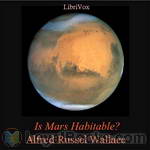 Is Mars Habitable?
Is Mars Habitable?
In 1907 Wallace wrote the short book Is Mars Habitable? to criticize the claims made by Percival Lowell that there were Martian canals built by intelligent beings. Wallace did months of research, consulted various experts, and produced his own scientific analysis of the Martian climate and atmospheric conditions. Among other things Wallace pointed out that spectroscopic analysis had shown no signs of water vapor in the Martian atmosphere, that Lowell’s analysis of Mars’ climate was seriously flawed and badly overestimated the surface temperature, and that low atmospheric pressure would make liquid water, let alone a planet girding irrigation system, impossible. | |
By: Alice A. Ball (1892-1916) | |
|---|---|
 Chemical Constituents of the Active Principle of the Ava Root
Chemical Constituents of the Active Principle of the Ava Root
The Chemical Constituents of Piper Methysticum or The Chemical Constituents of the Active Principle of The Ava Root is the text of a Master’s Degree thesis presented in June 1915 by Alice A. Ball. Ms. Ball was the first woman and African American to receive a Master’s Degree from the University of Hawaii. Her thesis includes some history of the use of the ava root in the South Pacific islands along with the isolation and analysis of the extracts of the kava root and some preliminary observations of its effects when administered to animals. - Summary by J. M. Smallheer | |
By: Allan Pinkerton (1819-1884) | |
|---|---|
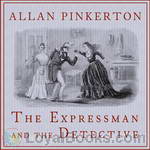 The Expressman and the Detective
The Expressman and the Detective
Allan Pinkerton (1819-1884), a Scotsman by birth and a barrel-maker by trade, settled in Chicago in its infancy and founded the Pinkertons, the world's first detective agency. Though events associated with the agency after his death have tarnished the name, Pinkerton himself was one of the original human rights advocates. He was a dear friend to John Brown, an advisor to Abraham Lincoln, and 80 years ahead of his time in hiring female detectives. He was also stubborn, irascible, and an egomaniac... | |
By: American and Foreign Anti-Slavery Society | |
|---|---|
 Two American Slavery Documents
Two American Slavery Documents
This recording contains two original documents. 1) Life of James Mars, a Slave Born and Sold in Connecticut, by James Mars . James Mars was born in Connecticut in 1790 and spent the better part of his youth a slave working for various owners—once fleeing to the woods with his family to avoid being relocated to the South. At age twenty-five he became a free man and moved to Hartford, Connecticut, where he became a leader in the local African American community. His memoir is one of the more famous accounts of slave life in early New England... | |
By: Andre Norton (1912-2005) | |
|---|---|
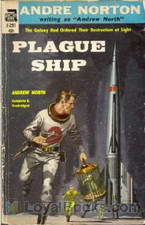 Plague Ship
Plague Ship
A Free Trader rocket ship heads for the remote planet, Sargol, which is blessed with immense natural wealth and precious gemstones. The ship is manned by the heroic Dane Thorson and his crew of intrepid space traders. On Sargol, they enter into complicated negotiations with the inhabitants of this strange planet. These feline people, the Salariki, are reluctant to enter into a business partnership with the free traders till they discover that the ship carries a small amount of catnip on board which they'd obtained from another trading post... | |
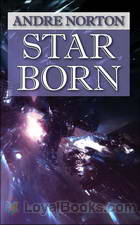 Star Born
Star Born
If you've read and enjoyed The Stars Are Ours, you will certainly enjoy this exciting sequel! Star Born by Andre Norton was first published in 1957, two years after the previous book and is in itself a complete and riveting read. The theme depicts an early inter-stellar flight undertaken by people who call themselves the Free Scientists escaping from an oppressive regime on Earth. When Pax, a global authoritarian regime takes over the planet, it deems all space travel illegal. However this small group flees before the rules come into force... | |
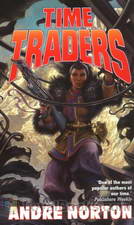 The Time Traders
The Time Traders
If it is possible to conquer space, then perhaps it is also possible to conquer time. At least that was the theory American scientists were exploring in an effort to explain the new sources of knowledge the Russians possessed. Perhaps Russian scientists had discovered how to transport themselves back in time in order to learn long-forgotten secrets of the past. That was why young Ross Murdock, above average in intelligence but a belligerently independent nonconformist, found himself on a “hush-hush” government project at a secret base in the Arctic... | |
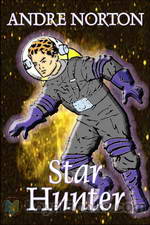 Star Hunter
Star Hunter
A science fiction novella depicting a thrilling cat-and-mouse game which plays out between a credulous young man and an interstellar safari leader, as the two take up an unanticipated adventure on the mysterious planet Jumala. Norton combines mind control, cunning schemes, interstellar travel, and alien intelligence in an action-packed adventure. The story unfolds with the introduction of Ras Hume, a pilot and Out-Hunter, who with the help of a criminal mastermind from the planet Nahuatl plans a conspiracy to secure a fortune by manipulating its supposed beneficiary... | |
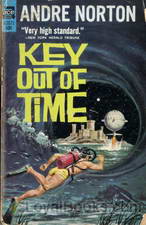 Key Out of Time
Key Out of Time
This is Book 4 in the Time Traders Series, In this book Ross Murdock and Arthur Ashe continue their adventures in Time and Space on the World of Hawaika. Hawaiian and Polynesian settlers help Ross and Ashe discover the way the world has changed from the data tape to present time. Helped by a girl (Karara) and her two trained dolphins (Tino-rau and Taua) | |
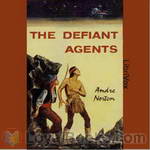 The Defiant Agents
The Defiant Agents
Travis Fox and a band of fellow Apache AmerIndians have their racial memories and survival abilities enhanced by the Redax machine and are sent to the planet Topaz, one of the few worlds of the ancient star empire that the US has voyage tapes to. But the Reds have “snooped” the tapes and get there first, and have a nasty surprise waiting for any ship that does not have the proper identification. Travis and some of his fellow Apaches survive the ensuing crash landing…but can they defeat the Reds and win Topaz for themselves? This work is a sequel to both The Time Traders and Galactic Derelict... | |
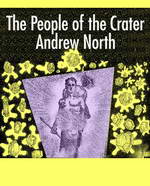 The People of the Crater
The People of the Crater
An air force pilot adrift in peacetime is recruited to join an Antarctic expedition. When a strange mist downs his plane he discovers an ancient alien civilization which has prophesized his arrival. Now he and his faithful pet Ana must descend to the depths of the crater and face the Black Ones in order to rescue the fair Thrala, daughter of the Ancient Ones. – Andre Norton (Alice Mary Norton) was a popular author of science fiction and fantasy who began publishing stories in the early 1930s. “The People of the Crater” was first published in volume 1 number 1 of Fantasy Book in 1947. | |
By: Andress Small Floyd (1873-1933) | |
|---|---|
 My Monks of Vagabondia
My Monks of Vagabondia
Before welfare or rehab, what happened to those unfortunates who lost their way, fell through the cracks, were cast off by society? Men such as Andress Floyd and his wife Lillian stepped up. In 1908, the philanthropists converted a mansion in New Jersey into a refuge for homeless men and during the more than 30 years of its operation, more than 100,000 men stayed there until they were able to get back on their feet. In this volume, Floyd has collected 13 diverse true tales of what brought some of the residents to seek succor and enlightenment at the Self-Mastery Colony. - Summary by Lynne Thompson | |
By: Andrew Wilson (1852-1912) | |
|---|---|
 Chapters on Evolution
Chapters on Evolution
Dr. Andrew Wilson FRSE was a Scottish physiologist and zoologist and lecturer in zoology and comparative anatomy at the University of Edinburgh and the Royal College of Surgeons of Edinburgh in the late 19th and early 20th century. In the preface of this book, he writes: "...the chief aim of the work is to present in a popular and readily understood form, the chief evidences of the evolution of living beings. In this view, whilst I have been content to assume the reality of that process, I have... | |
By: Anonymous | |
|---|---|
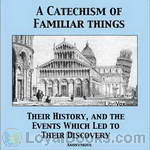 A Catechism of Familiar Things; Their History, and the Events Which Led to Their Discovery
A Catechism of Familiar Things; Their History, and the Events Which Led to Their Discovery
This book, a reprint of a successful English publication, has been so enlarged as to be to all intents and purposes new. It has been carefully revised by a Reverend gentleman, who for some time filled the chair of Physics and Chemistry in one of our colleges. Recent inventions and improvements are described in a simple, popular style, so as to be easily understood by all, and short notices are given of prominent inventors and scientists. The paragraphs relating to doctrinal matters conform in every respect to the teachings of the Church... | |
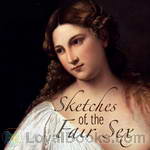 Sketches Of The Fair Sex
Sketches Of The Fair Sex
Sketches of the fair sex, in all parts of the world. To which are added rules for determining the precise figure, the degree of beauty, the habits, and the age of women, notwithstanding the aids and disguise of dress. It is our design to present a pleasing and interesting miscellany, which will serve to beguile the leisure hour, and will at the same time couple instruction with amusement. We have used but little method in the arrangement: Choosing rather to furnish the reader with a rich profusion... | |
 Manners and Rules of Good Society; Or, Solecisms to be Avoided by a Member of the Aristocracy
Manners and Rules of Good Society; Or, Solecisms to be Avoided by a Member of the Aristocracy
The title of this work sufficiently indicates the nature of its contents. The Usages of Good Society relate not only to good manners and to good breeding, but also to the proper etiquette to be observed on every occasion. Note: The abbreviation viz. is short for the Latin videlicet, which itself is a contraction of the Latin phrase videre licet, meaning "it is permitted to see". | |
By: Antonio Colmenero de Ledesma (d. 17th century) | |
|---|---|
 Chocolate: or, An Indian Drinke
Chocolate: or, An Indian Drinke
The Author sings the praises of Chocolate. “By the wise and Moderate use whereof, Health is preserved, Sicknesse Diverted, and Cured, especially the Plague of the Guts; vulgarly called _The New Disease_; Fluxes, Consumptions, & Coughs of the Lungs, with sundry other desperate Diseases. By it also, Conception is Caused, the Birth Hastened and facilitated, Beauty Gain’d and continued.” | |
By: Arabella B. Buckley (1840-1929) | |
|---|---|
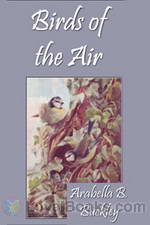 Birds of the Air
Birds of the Air
Arabella Buckley had a great love of nature and wished to impart that love to children. Birds of the Air will encourage children to observe birds in their natural environment and notice the habits of each particular bird they encounter. | |
 Wild Life in Woods and Fields
Wild Life in Woods and Fields
Wild Life in Woods and Fields by Arabella B. Buckley is a collection of stories that will encourage children to become little naturalists and explore the majesty of the great outdoors. This is science taught in such a charming, delightful way that children will learn without even realizing it! | |
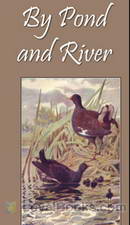 By Pond and River
By Pond and River
In By Pond and River, another of Arabella Buckley’s wonderful science books for children, she explains the habitats of ponds and rivers, exposing children to the animals and plant life that are found there. | |
By: Arabella Buckley (1840-1929) | |
|---|---|
 The Fairyland of Science
The Fairyland of Science
“I have promised to introduce you today to the fairy-land of science — a somewhat bold promise, seeing that most of you probably look upon science as a bundle of dry facts, while fairy-land is all that is beautiful, and full of poetry and imagination. But I thoroughly believe myself, and hope to prove to you, that science is full of beautiful pictures, of real poetry, and of wonder-working fairies…” (From the Introduction to The Fairyland of Science) | |
By: Archibald Williams (1871-1934) | |
|---|---|
 Romance of Modern Engineering
Romance of Modern Engineering
As it would be impossible to treat, in the compass of a few hundred pages, all the great engineering feats of modern times without reducing individual accounts to uninteresting brevity, the author has preferred, where selection is possible, to take typical instances of engineering practice, and, by the aid of comparatively detailed descriptions, to place the reader in a position to appreciate them and similar undertakings. - Summary by Adapted from the Preface | |
 Romance of Modern Invention
Romance of Modern Invention
This is a volume of exploration into the newest inventions of the turn of the previous century. Journalist Archibald Williams walks the reader through diverse inventions which were changing the world at just that point in time. - Summary by Carolin | |
 Romance of Modern Mechanism
Romance of Modern Mechanism
In 1910, when this book was published, the advancement of modern mechanism was still moving at a rapid pace. It must have seemed like very day, new inventions were made to make life easier. Most of these are still very much in use today, such as the lawn-mower, automatic milking machines in the dairy industry, fire engines, and escalators. Learn about how these worked in this volume. - Summary by Carolin | |
By: Aristotle (384 BC - 322 BC) | |
|---|---|
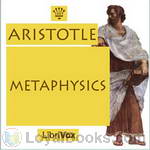 Metaphysics
Metaphysics
Metaphysics is essentially a reconciliation of Plato’s theory of Forms that Aristotle acquired at the Academy in Athens, with the view of the world given by common sense and the observations of the natural sciences. According to Plato, the real nature of things is eternal and unchangeable. However, the world we observe around us is constantly and perpetually changing. Aristotle’s genius was to reconcile these two apparently contradictory views of the world. The result is a synthesis of the naturalism of empirical science, and the mysticism of Plato, that informed the Western intellectual tradition for more than two thousand years... | |
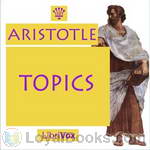 Topics
Topics
The Topics is is the fifth of Aristotle's six texts on logic which are collectively known as the Organon ("Instrument"). The Topics constitutes Aristotle's treatise on the art of dialectic—the invention and discovery of arguments in which the propositions rest upon commonly-held opinions or endoxa. Topoi are "places" from which such arguments can be discovered or invented. In his treatise on the Topics, Aristotle does not explicitly define a topos, though it is "at least primarily a strategy for argument not infrequently justified or explained by a principle." | |
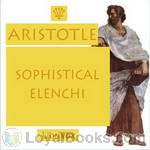 Sophistical Elenchi
Sophistical Elenchi
De Sophisticis Elenchis is the sixth of Aristotle's six texts on logic which are collectively known as the Organon ("Instrument"). In De Sophisticis Elenchis Aristotle identifies 13 falacies. Verbal Fallacies are: Accent or Emphasis; Amphibology; Equivocation; Composition; Division and Figure of Speech. Material Fallacies are: Accident; Affirming the Consequent; Converse Accident; Irrelevant Conclusion; Begging the Question; False Cause and Fallacy of Many Questions. | |
 On the Heavens
On the Heavens
On the Heavens (Greek: Περί ουρανού, Latin: De Caelo or De Caelo et Mundo) is Aristotle's chief cosmological treatise. In it Aristotle argues that the Earth is a sphere by pointing to the evidence of lunar eclipses. Aristotle also provides a detailed explanation of his theory of 'gravity' arguing that things which contain 'earth' fall towards the centre of the Universe because 'earth' is naturally attracted to the centre of the Universe. Aristotle argues that if the planet Earth was moved to the location of the Moon then objects which contain 'earth' would not fall towards the centre of the Earth but rather towards the centre of the Universe... | |
 On Generation and Corruption
On Generation and Corruption
On Generation and Corruption (Ancient Greek: Περὶ γενέσεως καὶ φθορᾶς, Latin: De Generatione et Corruptione, also known as On Coming to Be and Passing Away) is a treatise by Aristotle. Like many of his texts, it is both scientific and philosophic (although not necessarily scientific in the modern sense). The philosophy, though, is essentially empirical; as in all Aristotle's works, the deductions made about the unexperienced and unobservable are based on observations and real experiences... | |
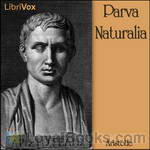 Parva Naturalia
Parva Naturalia
Parva Naturalia [the "short treatises on nature" (a conventional Latin title first used by Giles of Rome)] is a collection of books by Aristotle, which discuss natural phenomena involving the body and the soul. The books are as follows:I - On Sensation and the SensibleII - On Memory and RecollectionIII - On Sleeping and WakingIV - On DreamsV - On Prophecy in SleepVI - On Longevity and Shortness of LifeVII - On Youth and Old Age, Life and Death VIII - On Respiration | |
 Meteorology, On the Universe & On Breath
Meteorology, On the Universe & On Breath
Meteorology by Aristotle Translated by Erwin Wentworth Webster before he fell in action in 1917. Book I: The Celestial Sphere, Stars & Precipitation Book II: Seas, Winds & Earthquakes Book III: Halos, Rainbows & Mock Suns Book IV: The Elements & Secondary Qualities On the Universe is attributed to Aristotle but may have been written by Posidonius the Stoic or someone well acquainted with his work. Two candidates for the Alexander addressed in the text are Alexander the Great and Tiberius Claudius Alexander, nephew of Philo Judaeus and Procurator of Judaea, and in A... | |
 Generation of Animals
Generation of Animals
Generation of Animals ; Latin: De Generatione Animalium) Book 1: Sexual Parts, Semen & Sexual Generation Book 2: Sexes, Embryo Development & Sterility Book 3: Birds, Fish, Cephalopods, Insects, Bees & Testacea Book 4: Causes of Sex, Heredity & Teratology Book 5: Distinction between Necessity and the Final Cause Charles Darwin wrote: "Linnaeus and Cuvier have been my two gods, though in very different ways, but they were mere schoolboys to old Aristotle." - Summary by Geoffrey Edwards | |
 Movement & Progression of Animals
Movement & Progression of Animals
Movement of Animals begins with a discussion of the physics of motion and asks whether God, the Unmoved Mover, exists outside of our Universe. Progression of Animals asks why animals have the parts they do and to what end these parts are possessed. - Summary by Geoffrey Edwards | |
 On the Parts of Animals
On the Parts of Animals
On the Parts of Animals by Aristotle . The first book asks whether animals were designed or came into existence by chance. The remaining three books focus on particular examples of various animals and the functions of their organs. The translator William Ogle, who was both a medical doctor and classicist, presented Charles Darwin with a copy of this translation. | |
 History of Animals
History of Animals
Book I Grouping of animals and the parts of the human body. Book II Different parts of red-blooded animals. Book III Internal organs. Book IV Animals without blood . Books V & VI Animal reproduction. Book VII Human reproduction. Book VIII Habits . Book IX Social behavior. Book X Dealing with barrenness in women was excluded from the translation of D'Arcy Thompson for being spurious so the translation of the Clergyman Richard Cresswell is used instead. Sir D'Arcy Wentworth Thompson was a biologist, mathematician and classicist who also wrote On Growth and Form which discusses the mathematical patterns and structures formed in plants and animals. | |
By: Arnold Bennett (1867-1931) | |
|---|---|
 How to Live on Twenty-Four Hours a Day
How to Live on Twenty-Four Hours a Day
This book is a classic piece on self improvement teaching you to live to the fullest. Judging from the title of the book, the reader might expect that the book is a manual on how to manage your time better. Nothing could be further from the truth, this book is a flowery and witty self help book aimed at helping readers improve the quality of their lives, in fact it is one of the firsts of its kind in the world. Bennett describes the twenty four hours in a day as a miracle and that it should be used for the betterment of health, wealth, respect, pleasure and contentment... | |
By: Arthur Griffiths (1838-1908) | |
|---|---|
 Chronicles of Newgate Vol 1
Chronicles of Newgate Vol 1
Good against evil; right versus wrong; the judicial system against the criminal world. The struggle is as old as mankind. Sometimes the lines are blurred as the 'good' punish the 'bad' - the warriors against crime have resorted not only to killing wrong-doers, but additionally subjecting them to "starvation or the withholding of fluid, by drowning, stoning, impaling or by exposing the wretched victims to the stings of insects or snakes." Newgate Prison was one of the most famous - or infamous - prisons in England from the middle ages until the nineteenth century. Griffiths, a prison administrator, takes us inside where we discover "man's inhumanity to man". | |
By: Arthur Henry Patterson (1857-1935) | |
|---|---|
 Man and Nature on the Broads
Man and Nature on the Broads
From its man-made origins as a consequence of medieval peat excavations, the Broads of Norfolk and Suffolk have evolved into a natural ecosystem, providing habitat for a diverse range of flora and fauna , as well as a means of livelihood for the inhabitants of this region. In the company of the book’s author, a self-taught lifelong naturalist and undisputed expert of the Broads , we discover how the life of the Broads unfolds over the course of a single year. So, why not listen in, and join us... | |
 Notes of An East Coast Naturalist
Notes of An East Coast Naturalist
Arthur Henry Patterson was a self-taught naturalist with an immeasurable knowledge and perspicacity of the Broadland region’s flora and fauna – especially the area around Great Yarmouth and Breydon Water. He was the author of many books about Broadland and was a regular and popular contributor to the local county newspaper. From an early age, he developed an affinity with the natural history of the Broads and kept extensive daily notes on the area’s wildlife – which ultimately led him to collate and distil the observations that he had recorded over 25 years into this book... | |
 Through Broadland in a Breydon Punt
Through Broadland in a Breydon Punt
Arthur Henry Patterson was a self-taught naturalist who, from a very early age, devoted much of his free time to observing, discovering and documenting all aspects of the natural history of the Norfolk Broads, especially the area around Breydon Water near his home town of Great Yarmouth. At some 75000 acres , the Broads are the largest protected wetland in Britain. AHP was the author of many books about Broadland as well as submitting numerous papers and articles to nature societies and journals... | |
 Wild Life on a Norfolk Estuary
Wild Life on a Norfolk Estuary
Published in 1907 by Arthur Henry Patterson, a self-taught local naturalist, Wild Life on a Norfolk Estuary was one of his defining books on the seasonal nature and natural history of the Norfolk Broads. The book is presented in two sections - The first part documents life on and around Breydon Water and the Broads throughout each season of the year, whilst the second part is a continuation of a previous AHP book – Notes of an East Coast Naturalist. AHP’s approachability, enthusiasm and extensive knowledge of the natural history of the Broads region would allow him to develop regular contacts with a wide range of fellow naturalists... | |
By: Arthur T. Pierson (1837-1911) | |
|---|---|
 George Müller of Bristol
George Müller of Bristol
George Muller was a great hero of faith. His greatest aim was to demonstrate that God answers prayer and can be trusted for every minute detail of life. Spending countless hours asking God to provide his needs, he only relied upon God. God called him to care for orphans and he conducted his orphanage in the same way, on faith alone. When a certain need was apparent, they would immediately go to God in prayer. In this dynamic dependance on God, He always proved faithful. He also established over a hundred schools, educating over a hundred thousand people! His example of absolute dependence on God stands in the gap of history to declare that God is enough, and He is faithful! | |
By: Arthur William Clayden (1855-1944) | |
|---|---|
 Cloud Studies
Cloud Studies
Classification of clouds, and meteorological condition of how they are formed. Written by Arthur W. Clayden, M.A., who was the former principal of University College, Exeter, UK - | |
By: Asa Gray (1810-1888) | |
|---|---|
 Natural Science and Religion
Natural Science and Religion
Asa Gray was a highly-regarded botanist at Harvard University and a friend and collaborator of Charles Darwin. As a Christian, Gray was concerned with the disconnect developing through the nineteenth century between the growing understanding of the natural world and the traditional worldview assumed by orthodox Christianity. This book presents two lectures he gave to theology students at Yale College in which he argues that a disconnect is not inevitable, but that a Christian perspective can and should incorporate current understanding of the world provided by natural science. - Summary by BarryGanong | |
By: Auguste Comte (1798-1857) | |
|---|---|
 General View of Positivism
General View of Positivism
Auguste Comte was from France and published this book in French in 1844. He made a very great impact on the sciences and claims to have “discovered the principal laws of Sociology." Comte says Reason has become habituated to revolt but that doesn’t mean it will always retain its revolutionary character. He discusses Science, the trade-unions, Proletariat workers, Communists, Capitalists, Republicans, the role of woman in society, the elevation of Social Feeling over Self-love, and the Catholic Church in this book... | |
By: Austin L. Rand (1905-1982) | |
|---|---|
 Stray Feathers From a Bird Man's Desk
Stray Feathers From a Bird Man's Desk
Canadian zoologist, Austin L. Rand, takes a divergence from his scholarly works on ornithology to give us 60 entertaining sketches of bird life and lore from Birds Bathing to Courtship Feeding. From the author's introduction: "In looking back over the preparation of these sketches I feel as though each evening I'd gathered up the bits and pieces left over from the day's work and fashioned them into designs for my own amusement and the edification of my family. Truly it's as though I'd used stray feathers, fallen from the bird skins I'd handled, and fitted them together into something of wider interest than the original... | |
By: Ayn Rand (1905-1982) | |
|---|---|
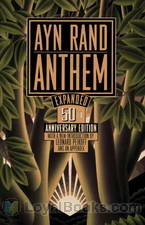 Anthem
Anthem
The title 'Anthem' is derived as an anthem to sense of self and self-governing thoughts. Anthem is a story of Equality 7-2521 who is a young man living in some unspecified future time and place. In this future era freedom and individual rights have been eradicated. The starring character of the novel is an inquisitive street cleaner. He lives in a society where people have lost their knowledge of individualism, to the extreme that people do not know words like 'I' or 'mine'. All the people live and work for their livelihood in collective groups, along with the people with power, namely the 'Councils'... | |
By: B. G. Jefferis and J. L. Nichols | |
|---|---|
 Searchlights on Health
Searchlights on Health
SEARCHLIGHTS ON HEALTH. THE SCIENCE OF EUGENICSBy PROF. B.G. JEFFERIS, M.D., PH. D. KNOWLEDGE IS SAFETY. 1. The old maxim, that Knowledge is power, is a true one, but there is still a greater truth: KNOWLEDGE IS SAFETY. Safety amid physical ills that beset mankind, and safety amid the moral pitfalls that surround so many young people, is the great crying demand of the age. 2. CRITICISM.--This work, though plain and to some extent startling, is chaste, practical and to the point, and will be a boon and a blessing to thousands who consult its pages... | |
By: Ben Bova (1932-) | |
|---|---|
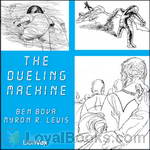 The Dueling Machine
The Dueling Machine
The Dueling Machine is the solution to settling disputes without injury. After you and your opponent select weapons and environments you are injected into an artificial reality where you fight to the virtual death… but no one actually gets hurt. That is, until a warrior from the Kerak Empire figures a way to execute real-world killings from within the machine. Now its inventor Dr. Leoh has to prevent his machine from becoming a tool of conquest. – The Dueling Machine, written with Myron R. Lewis, first appeared in the May, 1963 issue of Analog Science Fact & Fiction. | |
By: Benjamin Griffith Brawley (1882-1939) | |
|---|---|
 Your Negro Neighbor
Your Negro Neighbor
An historical and sociological view of race relations in America as it pertains to the African-American. - Summary by KevinS | |
By: Bernard Le Bovier de Fontenelle (1657-1757) | |
|---|---|
 Conversations on the Plurality of Worlds
Conversations on the Plurality of Worlds
This book is a popular science book written in the late 1600s. It is written as a series of conversations between a gallant philosopher and a countess, while walking in her garden and gazing at the stars. The philosopher explains the heliocentric model of the solar system and also muses on the possibility of extraterrestrial life. While it explains the heliocentric model, unlike other astronomy works of the time, it did not attract the attention of the Church. | |
By: Bernhard Eduard Fernow (1851-1923) | |
|---|---|
 Brief History of Forestry
Brief History of Forestry
An accessible, comprehensive summary of the science and art of forestry, from its ancient roots to its 20th century techniques . This book synthesizes forestry efforts and practices from around the globe, providing the reader with unique lens into the sociocultural, historic and, of course, economic processes of nearly every world region. | |
By: Bertha M. Clark | |
|---|---|
 General Science
General Science
GENERAL SCIENCEBY BERTHA M. CLARK, PH.D.PREFACEThis book is not intended to prepare for college entrance examinations; it will not, in fact, prepare for any of the present-day stock examinations in physics, chemistry, or hygiene, but it should prepare the thoughtful reader to meet wisely and actively some of life's important problems, and should enable him to pass muster on the principles and theories underlying scientific, and therefore economic, management, whether in the shop or in the home. We... | |
By: Bertrand Russell (1872-1970) | |
|---|---|
 ABC of Atoms
ABC of Atoms
A short introductory book about atoms, subatomic particles and new physics theories. | |
 ABC of Relativity
ABC of Relativity
The ABC of Relativity clearly and engagingly explains Einstein's Theory of Relativity to the layperson. It is considered to be a significant contribution to the popularization of science. Its author, Bertrand Russell, was an acclaimed British mathematician, philosopher and logician. Please note that in a few of the chapters, diagrams are included which clarify the author's discourse. The listener may wish to consult a published text to refer to these diagrams. | |
By: Bhakti Seva | |
|---|---|
 The Hindu Book of Astrology
The Hindu Book of Astrology
Each person is born in or under one of the twelve signs of the Zodiac and is thus influenced throughout life by the planetary conditions at their time of birth. By referring to your sign, which is indicated by your date and month of birth you can determine your natural tendencies and what is best for you to attract. No matter what one of the twelve signs of the Zodiac you are born under, you can develop into a good and successful person if you will pay strict attention to the golden truths printed in this book. (Bhakti Seva) | |
By: Bradford Torrey (1843-1912) | |
|---|---|
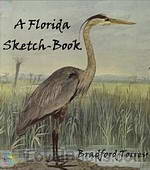 A Florida Sketch-Book
A Florida Sketch-Book
This is a series of late-19th Century essays about Florida’s flora & fauna written by a Massachusetts-based naturalist. | |